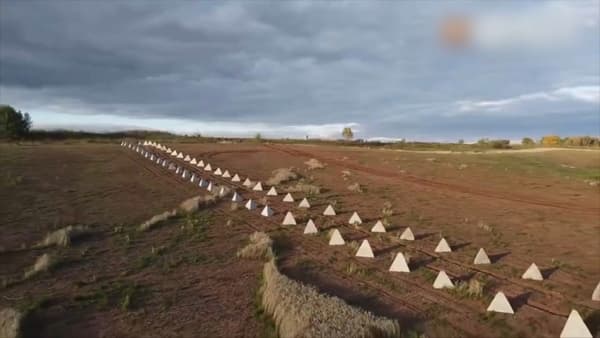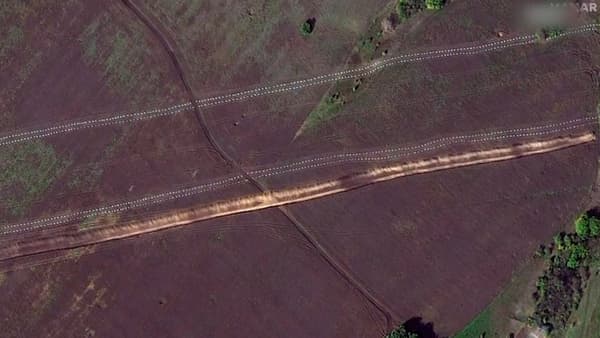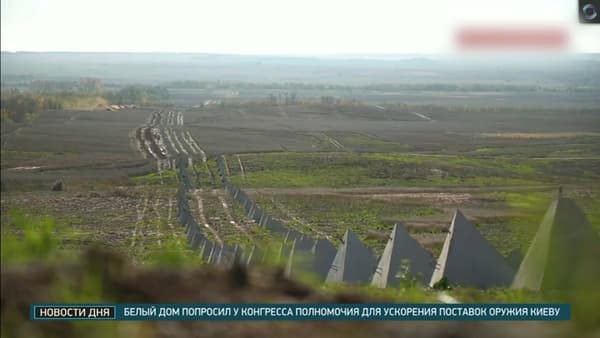A very special line of defense. Russian mercenaries from the Wagner group announced in mid-October that they had launched the construction of “dragon’s teeth”, a 200-kilometre anti-tank building intended to counter the advance of kyiv’s forces in the Lugansk region in the east. Ukraine.
But what do we know about this project? The announcement was made by the oligarch Yevgeny Prigokhine on October 19. “A complex of fortifications is being built on the line of contact, commonly known as the ‘Wagner line,'” the Kremlin-close businessman said on social media for his company Concord.
A kind of “Maginot line”
This kind of “Maginot line”, these fortifications designed to counter the Germans during World War I, consist of “a multi-level defense”, indicates the Russian, without giving more details.
It is the work of the Wagner militia, a private company that has functioned since the beginning of the conflict as “one of the armed arms of the Kremlin”, recalls General Jérôme Pellistrandi, a consultant for BFMTV. It is made up of “soldiers without faith or law who do not respect any law of war,” he says.

Two 200 km lines and a trench
Since this announcement, aerial shots have allowed us to know more. The surprising name of this military building comes first from its shape.
In fact, the “Wagner line” is made up of white cement blocks set up in two rows and are supposed to stop the advance of tanks, according to data analyst Benjamin Pittet, based on aerial photography. Follow a line of trenches, then firing positions.
“It prevents the advance of the tanks,” explains General Pellistrandi to BFMTV. “And since you know exactly where your line is, if an enemy tries to cross it, you bombard it with artillery,” he says.
The map of the planned project by the Russian mercenaries was published by a Wagnerian outlet that presented itself as a Russian news agency, RIA FAN. It shows a very remote line that cuts the Luhansk region in two.
The entire construction should be 200 km long, according to CNN calculations, but only two kilometers have been completed so far, the Ukrainian governor of the Luhansk region estimates on Telegram. ABC for its part estimates the building at 12 km according to satellite images.

The line must also cross the Belgorod region, Russian territory close to the border with Ukraine, according to photos shared by the region’s governor on Telegram. Segments are also being installed in the Kursk region, according to its local governor.
A still fragile line
Why such a project? The Russian outlet Zvedza TV, dedicated to the Moscow forces, describes the “Wagner line” as a “second line of defense” in case the Ukrainians manage to cross the first.
For Olivier Kempf, director of the strategic synthesis firm La Vigie, this project could sound like a sign of the failure of the Russian forces.
“The Russians expect to give in and are already preparing a next stop, which would then be an admission of weakness,” he suggests in an interview with France Info.

Alternatively, however, the Russians may have “learned from their mistakes after the loss of Izioum and Lyman” and are acting “out of an abundance of caution”. “Paradoxically, it would be a sign of strength,” analyzes Olivier Kempf.
Several observers also believe that the line remains quite fragile at the moment, France Info reports. The blocks, in particular, appear to be much lower in height than those on the Siegfried Line, built by the Germans during World War II, are not camouflaged or buried in the ground.
Offensive staging?
The project would not be, however, an order from Moscow, since the Wagner group was paramilitary. This line of defense could serve the oligarch who launched it to establish the narrative of him as the maximum defender of the national territory, estimates AFP.
Yevgeny Prigokhine had rightly lambasted last October the “bureaucrats-enemies” of Moscow who do not support him, those, he says, who “constantly change the scene since February” and the start of the war.
“Russian troops are on the defensive and he is on the offensive, it is his main interest: to transform this battle into political influence, therefore into money,” estimates the Ukrainian analyst Mykola Bielieskov.
Source: BFM TV

